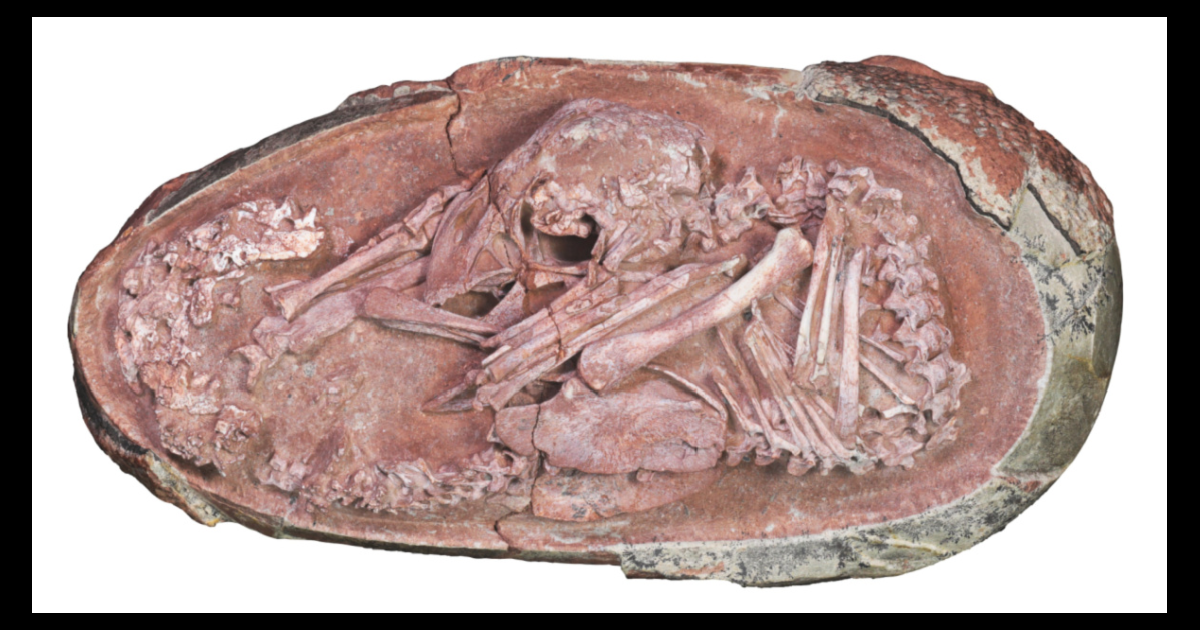
If you think this sounds like the backstory of a new Jurassic Park movie, you’re not wrong – but this time it’s real life, and no one is planning to use it to fund a deadly theme park.
At least, not that we know of. Yet.
Dinosaurs produced offspring by laying eggs – yes, like birds – but fossils of intact dinosaur eggs or embryos are extremely rare.
https://twitter.com/Jordan_Mallon/status/1524006347683074048
Which is why everyone is super excited about this fossilized egg, complete with baby dinosaur curled inside, that was found in China last year.
One of the paper’s authors, Fion Waisum Ma, issued a statement about the find.
“Dinosaur embryos are some of the rarest fossils and most of them are incomplete with the bones dislocated. We are very excited about the discovery of ‘Baby Yingliang’ – it is preserved in great condition and helps us answer a lot of questions about dinosaur growth and reproduction with it.”
The specimen in question is from the oviraptorosaur family. They have feathers, a deep toothless skull, and around 10.6 inches long.
https://twitter.com/FionMaWS/status/1473322155454582784
Researchers noted that the prenatal baby looked very similar to a baby bird curled in its egg, which they consider to be another link between modern birds and their dinosaur ancestors.
This is especially important because scientists believe the “tucking” posture is crucial for survival. Birds who do not attain it are more likely to die upon hatching, and there has been a theory floating around positing that the behavior began in dinosaurs millions of years ago.
This seems to help them prove that’s the case.
Dinosaurs are one of the pieces of Earth’s history that never seems to get old, and so discoveries like this never seem to get less exciting.
Let’s just hope no one gets the bright idea to clone – and hatch – this one, no matter how small.